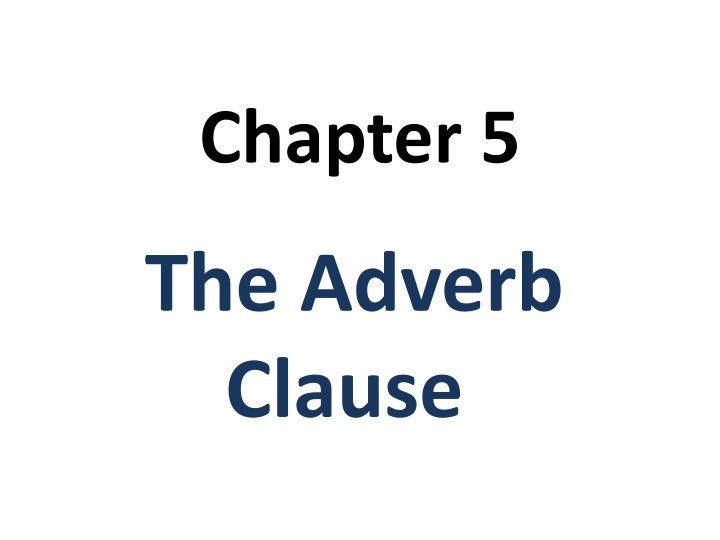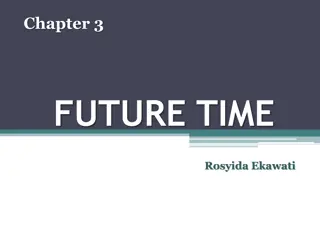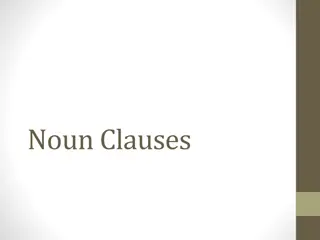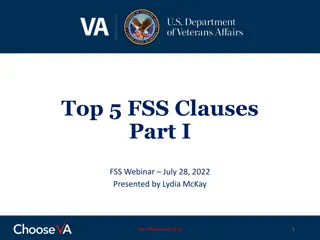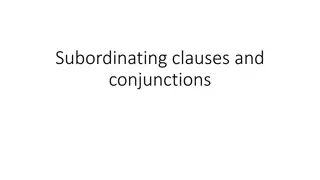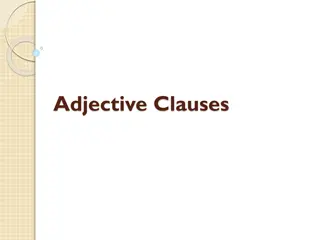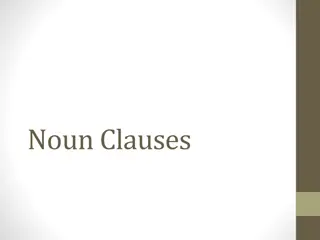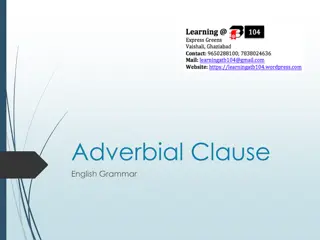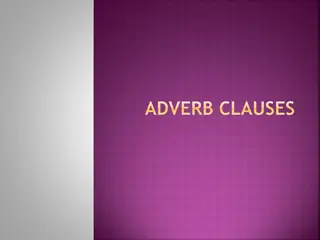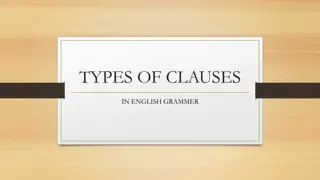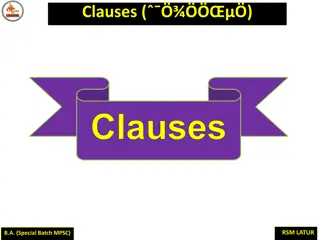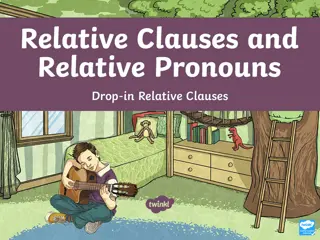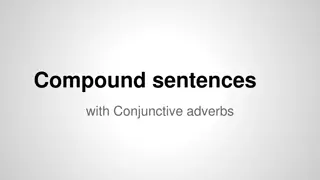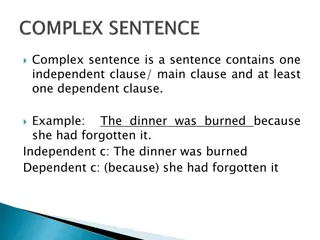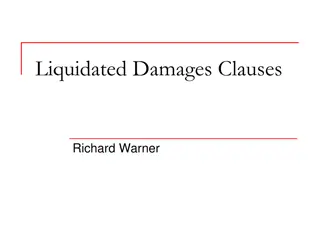Adverb Clauses
The provided content explains adverb clauses, their types (time, condition, cause and effect, contrast), and examples of how they modify sentences. It also details adverb clauses of time, time clauses, and their usage in sentences. Learn to identify and use adverb clauses effectively.
Download Presentation

Please find below an Image/Link to download the presentation.
The content on the website is provided AS IS for your information and personal use only. It may not be sold, licensed, or shared on other websites without obtaining consent from the author.If you encounter any issues during the download, it is possible that the publisher has removed the file from their server.
You are allowed to download the files provided on this website for personal or commercial use, subject to the condition that they are used lawfully. All files are the property of their respective owners.
The content on the website is provided AS IS for your information and personal use only. It may not be sold, licensed, or shared on other websites without obtaining consent from the author.
E N D
Presentation Transcript
Chapter 5 The Adverb Clause
Adverb Clause Adverb clauses are: 1. Dependent clauses (S + V) 2. They must have a subordinating conjunction to connect them to the other clause (main/ indep Cl). 3. They function as adverbs modify the verb in the main clause.
Types of Adverb Clauses Time: after, when, until, soon, before, once, while, as soon as, whenever, by the time Condition: if, whether or not, provided, in case, unless, even if, in the event Cause and effect: because, as, since, so, in order that, now that, inasmuch as Contrast: though, although, while, whereas, even though and others
An adverb clause will be separated from the other clause (main) with a comma if the adverb cl. begins the sentence. If the sentence begins with the main cl., no comma is used. Examples of sentences containing adverb clauses with and without commas: 1. Whether you like it or not, you have to go. 2. You have to go whether you like it or not.
Examples of Adverb Clauses Adverb clauses can modify by telling the place, time, cause, and purpose of an action. They can also show concession and condition. Basically they answer the questions: Where?, when?, why?, and under what conditions? Place: Wherever there is music, people will often dance. Let s go to the room where they asked us to wait. Time: After the chores are done, we will eat ice cream. When the clock strikes midnight, she has to leave. Cause: She passed the course because she worked hard. Since he has long hair, he wears a ponytail. Purpose: So that he would not ruin the carpet, he took off his shoes. He ate vegetables in order to stay healthy. Concession: Even though you are 13, you can t go to that movie. Although you gave it your best, you did not win the match. Condition: If you save some money, you can buy a new game. Unless you hurry, you will be late for school.
Adverb Clauses of Time An adverb of time states when something happens or how often. An adverb of time often starts with one of the following subordinating conjunctions: after, as, as long as, as soon as, before, no sooner than, since, until, when, or while.
Time Clauses Time clauses are used to relate actions or situations that occur at the same time or in a sequence. There are three types of time clauses: 1. Future 2. Present 3. Past Eman Alkatheery
